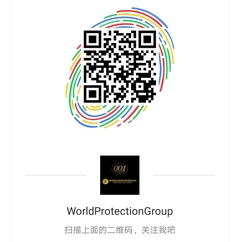How Traffic Rules Shape Our Daily Decision-Making
1. From Hidden Histories to Everyday Choices: The Influence of Traffic Rules on Decision-Making
Traffic regulations are often perceived merely as tools to ensure road safety, but their roots run deep into history and psychology, profoundly influencing our subconscious decision patterns. Understanding how these rules originated and evolved can shed light on the ways they shape our daily choices beyond just driving.
a. How historical origins of traffic rules inform our subconscious choices
Many traffic rules are based on centuries-old customs and practical needs. For example, the practice of driving on the right or left side traces back to medieval times when knights preferred a particular side for safety reasons. These long-standing conventions embed themselves into our subconscious, often guiding reactions without deliberate thought. Cognitive science suggests that repeated exposure to such norms creates mental associations that influence split-second decisions, such as whether to yield or accelerate.
b. The evolution of traffic regulations and their impact on modern decision frameworks
Over centuries, traffic rules have been refined through legislative efforts and technological advancements. The transition from simple manual signals to complex traffic light systems represents a shift from basic rules to sophisticated decision frameworks. These changes have conditioned drivers to interpret an array of signals—colors, signs, and signals—as part of an automated decision-making system. Consequently, our brains develop heuristics, or mental shortcuts, that streamline responses but can also introduce biases, like over-reliance on green lights or misjudging pedestrian behaviors.
c. Connecting past game-theoretic scenarios, like Chicken Road 2, to real-world decision patterns
Strategic interactions such as the classic game of Chicken illustrate how individuals make split-second decisions that balance risk and cooperation. In traffic, this is exemplified when drivers approach a four-way stop or a merge point, often implicitly engaging in a game of brinkmanship. The scenario The Hidden History of Traffic Rules and Games Like Chicken Road 2 explores how these ancient and modern decision frameworks influence our everyday behavior, subtly promoting either cooperative or competitive responses.
2. The Psychology Behind Traffic Compliance and Risk Assessment
a. Cognitive biases that influence how we interpret traffic signals and rules
Research indicates that cognitive biases such as optimism bias (believing bad outcomes are less likely to happen to oneself) and heuristics (mental shortcuts) significantly impact driving decisions. For instance, drivers often underestimate the risk of running a red light, leading to risky behaviors despite knowing the rules. Confirmation bias can also cause drivers to interpret ambiguous signals in a way that justifies their actions, reinforcing habitual behaviors.
b. Risk perception shaped by cultural and situational factors
Cultural norms heavily influence how risk is perceived. In some societies, aggressive driving and jaywalking are normalized, affecting individual risk assessments. Situational factors like weather, traffic density, or time pressure further modulate perceptions, often overriding strict compliance with rules. For example, a driver may ignore a yellow light if they believe stopping could cause a rear-end collision, demonstrating adaptive risk assessment rooted in contextual cues.
c. How understanding these psychological elements can improve decision-making on the road and beyond
By recognizing the biases and perceptions that influence driving choices, policymakers and educators can develop targeted interventions—such as simulations or awareness campaigns—to promote safer decision-making. Moreover, these insights extend to broader societal contexts, helping individuals make better choices in situations involving risk and cooperation, from workplace safety to public health initiatives.
3. Traffic Rules as Social Contracts: Building Trust and Cooperation
a. The role of implicit agreements in maintaining order and safety
Traffic laws function as social contracts, establishing mutual expectations among road users. These implicit agreements—such as the understanding that red means stop—create a predictable environment, essential for safety. Studies in social psychology show that such shared norms foster trust, reducing uncertainty and conflict on the roads. When drivers obey or deviate from these norms, they influence the collective safety fabric.
b. How individual decisions reinforce or undermine collective traffic safety
Individual choices, such as yielding or aggressive driving, have ripple effects on collective safety. For example, a single driver choosing not to stop at a stop sign can encourage others to ignore it, undermining trust in traffic signals. Conversely, consistent compliance reinforces social norms, fostering a culture of cooperation that benefits all.
c. Lessons from traffic game dynamics that can be applied to social cooperation
Game-theoretic models like the Prisoner’s Dilemma and Chicken highlight how cooperation can be achieved through mutually understood rules. In traffic, adherence to norms acts as a form of social cooperation, encouraging predictability. Extending these principles to other social domains—such as community engagement or organizational behavior—can improve collective outcomes by emphasizing the importance of shared commitments and trust.
4. The Impact of Traffic Regulations on Daily Behavior and Social Norms
a. How adherence to traffic rules extends to broader societal discipline
Compliance with traffic regulations cultivates habits of discipline and respect for rules that often spill over into other areas of life—such as workplace punctuality or civic responsibilities. Research demonstrates that communities with strong traffic safety cultures tend to exhibit higher levels of social order and cooperation in general.
b. The influence of traffic norms on non-driving decisions and routines
Traffic norms shape behaviors beyond driving. For instance, queuing and pedestrian crossing habits mirror broader social norms about patience, respect, and fairness. Such routines help reinforce societal values, demonstrating how the microcosm of traffic can reflect macro-level social discipline.
c. Case studies of communities where traffic culture shapes social interactions
In Scandinavian countries, strict adherence to traffic rules correlates with high levels of societal trust and low accident rates. Community campaigns that promote pedestrian awareness and driver courtesy have fostered social cohesion, illustrating how traffic culture can positively influence social interactions and norms.
5. Non-Obvious Factors in Decision-Making: Technology, Environment, and Personal Values
a. The effect of navigational apps and real-time data on decision patterns
Modern navigational tools, such as GPS apps, provide real-time traffic data that influence route choices and driving behavior. Studies show that drivers tend to follow suggested routes, which can reduce congestion but also lead to new patterns of risk or congestion in less familiar areas. These tools effectively serve as external decision aids, shaping behavior through data-driven inputs.
b. Environmental considerations influencing choice—e.g., eco-friendly routes
Increasing environmental awareness prompts drivers to select routes that minimize carbon footprints, such as avoiding congested areas or choosing electric vehicle-friendly paths. These personal values modify responses to traffic rules, integrating ecological priorities into everyday decisions.
c. Personal ethics and safety priorities that modify responses to traffic rules
Individuals’ personal ethics—like prioritizing safety over speed—shape their compliance levels. For example, some drivers may choose to ignore minor infractions if they believe it aligns with their moral stance on safety or efficiency, exemplifying how personal values intersect with traffic decision-making.
6. The Future of Traffic Rules: From Compliance to Autonomous Decision-Making
a. How emerging technologies challenge traditional decision paradigms
Autonomous vehicles operate based on algorithms that interpret traffic rules and environmental data differently from humans. These systems challenge traditional decision-making models by enabling rapid, precise responses and complex coordination, potentially reducing human error but raising questions about algorithmic biases and ethical considerations.
b. The potential for AI and machine learning to redefine safety protocols
AI-driven systems can learn from vast datasets, improving safety protocols through predictive analytics and adaptive responses. For instance, machine learning models can anticipate risky behaviors and adjust vehicle responses proactively, creating a new layer of decision-making that transcends human limitations.
c. Preparing society’s decision-making processes for autonomous and semi-autonomous vehicles
As autonomous technology becomes widespread, societal norms and legal frameworks must evolve. Education campaigns, regulatory standards, and ethical guidelines are necessary to ensure that human drivers and autonomous systems operate harmoniously, fostering trust and safety in future traffic ecosystems.
7. Bridging Past and Present: How Historical Games and Rules Inform Modern Decision Frameworks
a. Reflection on strategic interactions like Chicken Road 2 and their relevance today
Games like Chicken Road 2 exemplify how strategic decision-making involves balancing risk and cooperation—a principle that underpins modern traffic behavior. Recognizing these patterns helps in designing better traffic management systems and driver education programs that promote safer choices.
b. The evolution of decision-making models from game theory to real-world practice
Game theory provides a framework for understanding competitive and cooperative behaviors. Its principles are evident in traffic scenarios, where drivers implicitly engage in strategic interactions. Applying these models aids in developing policies that align individual incentives with collective safety.
c. Encouraging proactive understanding of traffic rules as tools for societal benefit
By viewing traffic regulations through the lens of game theory and history, individuals can appreciate their broader societal purpose. Promoting this understanding fosters proactive compliance, transforming traffic rules from mere regulations into powerful tools for social harmony and safety.






Leave a Reply
Want to join the discussion?Feel free to contribute!